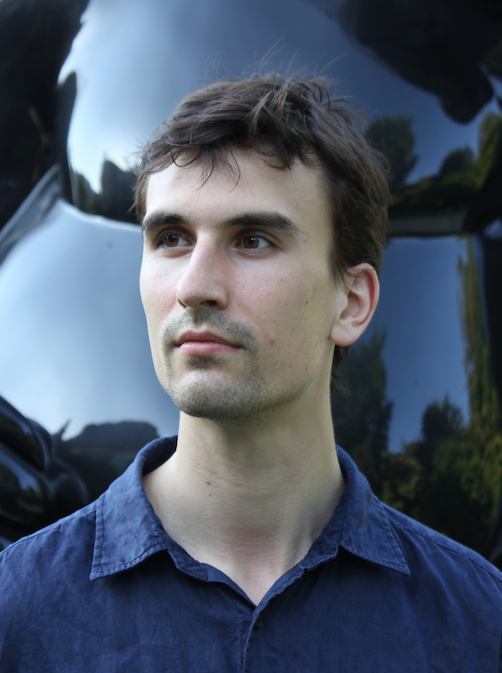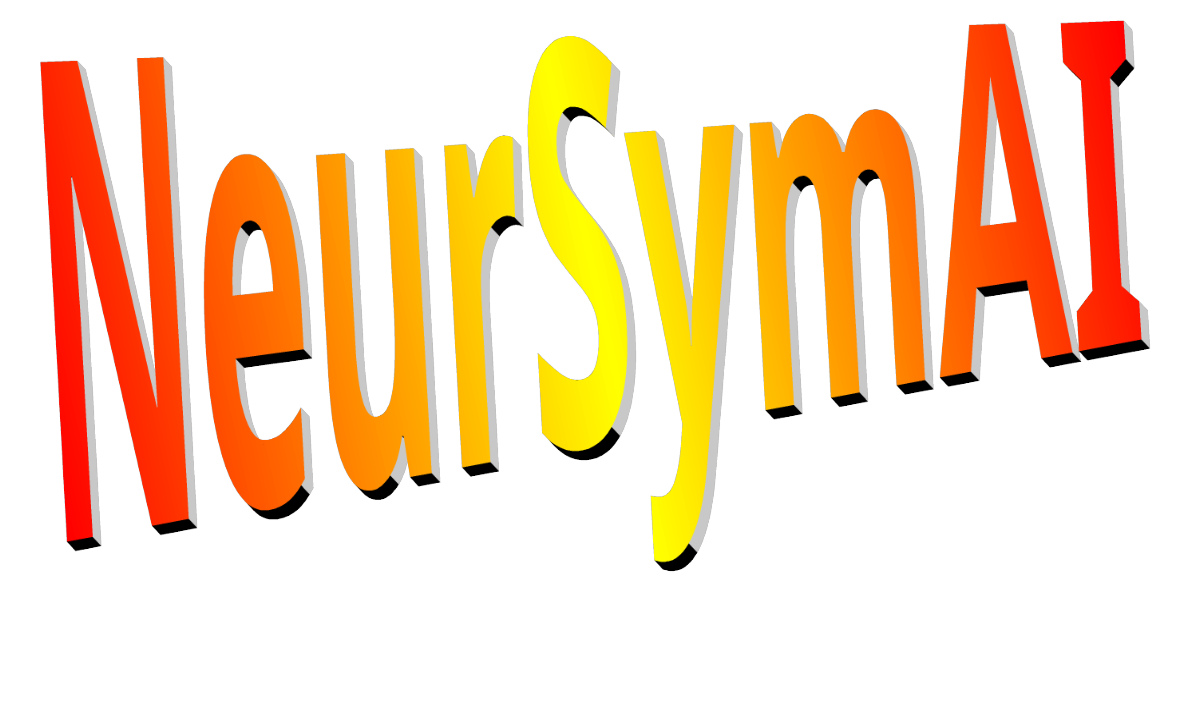
|
Telecom Paris
Dep. Informatique & Réseaux  Nils Holzenberger
← Home pageJanuary 2026
Nils Holzenberger
← Home pageJanuary 2026 |

 Logic, Knowledge Representation and Probabilities
Logic, Knowledge Representation and Probabilities
| with | Samuel Reyd |

|

Statistical Machine Learning in ProbLog
We saw how ProbLog programs can be used to express probabilistic models, then compute the probabilities of certain predicates. Sometimes, the structure of the underlying mechanism is known, but not the exact parameters of the mechanism. Let’s start with the example below.
Dice
|
Write ProbLog code that describes one throw of two unbiased dice. You should write two predicates: 1. die(+Id, -Value) where Id can be any integer, and Value is the result of rolling one die (so, an integer from 1 to 6). 2. roll(?Outcome) where Outcome is the result of one round of the game above: roll two dice, then sum their value. Outcome is an integer. |
| Alice expects that both of Bob’s dice are biased, with the same bias. Knowing that t(_)::a. means that a is a probabilistic ProbLog atom with a learnable parameter, edit the previous die/2 predicate to have learnable probabilities. |
Hidden Markov Models in ProbLog
Assume that there is an automaton with \(n\) states. It can shift from one state to the next, with a certain probability, or stay in its current state. Those probabilities can be described by a matrix \(T\), where \(T_{i,j}\) is the probability that the automaton goes from state \(i\) to state \(j\). Naturally, \(\sum \limits_{j=1}^n T_{i,j} = 1\). In each state, the automaton can emit a symbol from a finite list of \(m\) symbols, with probability \(E_{i,j}\) where \(1 \leq i \leq n\) and \(1 \leq j \leq m\). \(E_{i,j}\) is the probability that the automaton will emit symbol number \(j\) when in state number \(i\). Of course, \(\sum \limits_{j=1}^n E_{i,j} = 1\). Last ingredient of this automaton, it starts from state \(i\) with probability \(s_i\).
An HMM starts in some state, then emits a symbol. Then, it moves on to the next state, and emits another symbol. Then, it moves to another state, and so on. This happens in discrete time, i.e. \(t=0, 1, 2, 3, ...\). We only observe the symbols that were emitted, without knowledge of the HMM’s state (hence the name Hidden Markov Model).
Describing an HMM using ProbLog
Let’s write an HMM that represents a fictitious weather model. In that fictitious model, there are 6 types of weather:
- 'cloudy-dry'
- 'cloudy-rainy'
- 'sunshine'
- 'fog'
- 'foggy-rainy'
- 'sunshine+rain'
First, the weather can start in state 0 or 1, each with probability .5: .5::start(0) ; .5::start(1). In the dry state, the weather can be ‘cloudy-dry’ with probability .3 or ‘sunshine’ with probability .7, but not both at the same time. We express this with the following ProbLog disjunction: .3::emit(Time, 0, 'cloudy-dry'); .7::emit(Time, 0, 'sunshine').. In the funny state, the weather is invariably 'sunshine+rain', which we encode with this deterministic rule: emit(_, 2, 'sunshine+rain').
| Write a probabilistic clause to express that in the wet state, the weather is 'cloudy-rainy' with probability \(\frac{4}{7}\), 'fog' with probability \(\frac{2}{7}\) and 'foggy-rainy' with probability \(\frac{1}{7}\). |
The weather changes from one hidden state to the next. To say that from state 0 (dry), the weather stays in state 0 with probability .5, goes to state 1 (wet) with probability .3, and to state 2 (funny) with probability .2, we use this annotated disjunction:
.5::trans(Time, 0, 0); .3::trans(Time, 0, 1); .2::trans(Time, 0, 2).
To say that from state 1, the weather stays in state 1 with probability .5, goes to state 0 with probability .3, and to state 2 with probability .2, we write:
.3::trans(Time, 1, 0); .5::trans(Time, 1, 1); .2::trans(Time, 1, 2).
| Write a ProbLog clause expressing that from state 2, the weather stays in state 2 w.p. .2, and goes to state 0 or 1 w.p. .4 for each. |
Combine the code you have written -- and that which was shown up to here about start, trans and emit -- with this implementation of HMMs in ProbLog. The query query(observe_sequence([X1,X2,X3])). will return all possible sequences of 3 weather types along with their probabilities. However, the number of possible sequences is \(m^t\), so that the query query(observe([X1,X2,X3,X4,X5,X6,X7,X8])). is unlikely to finish in a reasonable time on your laptop. However, it is possible to sample from this program by running
problog sample filename.pl -N 100
With this command, you can also estimate the probability of all 8-symbol sequences, using
problog sample filename.pl --estimate
and setting a maximum time of sampling or a maximum number of samples -- very convenient for intractable problems.
| Try sampling from your program, and paste 10 samples of 8-symbol sequences into the answer form. You can make ProbLog print the probability of each sample using the flag --with-probability. |
Learning parameters
| Take all the rules about start, trans and emit that we had so far, and change them to turn their probabilities into learnable parameters. Paste in those lines of code into the answer form. |
problog lfi weather-learn.pl evidence.pl -O learned-model.pl -v
learned-model.pl contains the probabilities learned by ProbLog. Compare that to the original probabilities -- do they match?
To learn the parameters, ProbLog adjusts the parameters to maximize the observed evidence. This is the maximum likelihood estimation of the parameters. To achieve that, ProbLog uses expectation maximization.
Rewrite the clauses about start, trans and emit, so that
|
|
Use the learnable HMM from the previous question to learn the parameters of the weather model:
problog lfi weather-learn.pl evidence.pl -O learned-model.pl -v -n 500 This command will run up to 500 learning iterations, which should take about 10 minutes. Take that opportunity to get up and stretch your legs. You can find the learned parameters in learned-model.pl. Compare the learned parameters to the parameters of the original model. What do you notice? |
Sleep

Resources
Bibliography
- Inference and learning in probabilistic logic programs using weighted Boolean formulas or alternate link.
- Neural probabilistic logic programming in DeepProbLog (slightly more up to date than paper below)
- DeepProbLog: neural probabilistic logic programming
Documentation and tutorials
- ProbLog website
- ProbLog installation instructions
- ProbLog online interface
- ProbLog documentation
- Deep ProbLog repository
 Back to the main page
Back to the main page